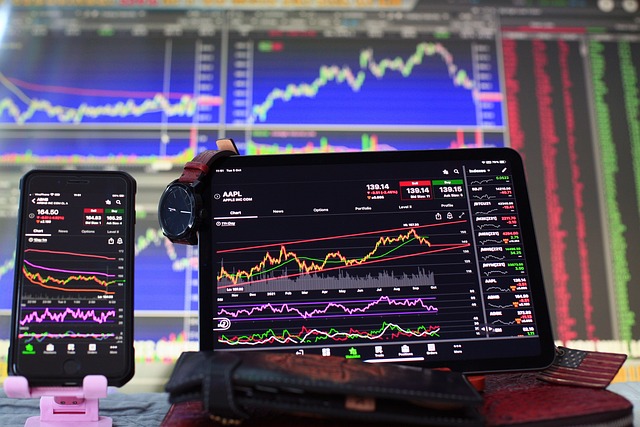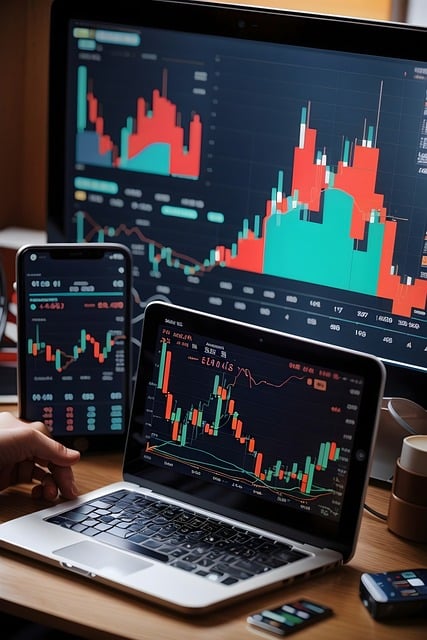Navigating the Digital Frontier: An In-Depth Look at Bot Trading
In the ever-evolving landscape of financial markets, the emergence of automated trading systems, commonly known as bot trading, is capturing the attention of both seasoned investors and novices alike. This article explores the ins and outs of bot trading, its implications for the market, and the potential it holds for traders in the digital age.

Understanding Bot Trading
At its core, bot trading refers to the use of software programs to execute trades automatically based on predefined strategies, market conditions, and algorithms. These trading bots are designed to analyze vast amounts of data far quicker than a human could, making decisions in real-time to capitalize on market opportunities.
What is a Trading Bot?
A trading bot is an application that connects to a trading platform via an API, allowing it to place orders without human intervention. These bots are programmed with specific trading strategies that define the parameters for buying and selling assets.
Types of Trading Bots
- Market Making Bots: These bots provide liquidity to the market by placing both buy and sell orders for the same asset, profiting from the spread.
- Trend Following Bots: These bots capitalize on market momentum by purchasing assets trending upward and selling those trending downward.
- Arbitrage Bots: These bots identify price discrepancies of the same asset on different exchanges and trade accordingly to profit from the difference.
The Rise of Bot Trading
Over the past decade, the popularity of bot trading has surged, fueled by the advent of advanced technology and the increasing accessibility of financial markets. This rise can be attributed to several factors:
1. Technology Advancements
With the rapid progress in artificial intelligence and machine learning, trading algorithms have become more sophisticated. Bots can analyze market patterns and execute trades based on complex algorithms, allowing them to make decisions in milliseconds. **In my opinion, the fusion of AI with trading strategies is a game changer, as it opens the door to more efficient and profitable trading endeavors.**
2. Increased Market Accessibility
The democratization of trading platforms has made trading more accessible to the average person. Many platforms now offer APIs and ready-made bots for retail traders. This increased accessibility means that even individuals with minimal trading experience can compete in the market. **This shift represents a double-edged sword; while it empowers individuals, it also raises concerns about market volatility.**
3. The Quest for Efficiency
In a market where speed is crucial, bot trading allows traders to seize opportunities that manual trading simply cannot match. Bots can monitor multiple markets simultaneously, execute trades at lightning speed, and operate 24/7. **In my view, this efficiency can lead to a more dynamic trading environment—but it also potentially exacerbates sharp market fluctuations.**
Advantages of Bot Trading
While bot trading offers numerous advantages, it is essential for traders to understand these benefits clearly.
1. Speed and Efficiency
Time is money in trading, and bots can process information and execute orders within milliseconds. This speed ensures that opportunities are not missed, especially in fast-moving markets. **In my opinion, this aspect of bot trading is crucial for those looking to capitalize on short-term price movements.**
2. Emotionless Trading
One of the most significant advantages of bot trading is its ability to operate without the emotional biases that often plague human traders. Bots execute trades based on logic and data, eliminating the potential for fear, greed, or biases to influence trading decisions. **I believe this aspect is vital, as emotional trading often leads to errors that can be detrimental to one’s portfolio.**
3. Backtesting Capabilities
Most trading bots allow users to backtest their strategies against historical data, providing insights into how a strategy might perform in real-market conditions. This ability to refine strategies before deploying them in a live environment can significantly reduce risk. **From my perspective, backtesting is imperative for any serious trader, as it enhances the probability of success.**
4. Diversification
Bots can manage and trade multiple assets simultaneously, allowing traders to diversify their portfolios without needing constant human oversight. **In my view, diversification is a critical strategy in risk management, and bots can facilitate this without overwhelming the trader.**

Challenges and Risks of Bot Trading
Despite the many benefits of bot trading, it is crucial to acknowledge that it comes with its own set of challenges and risks.
1. Over-Optimization
One of the risks in bot trading is the potential for over-optimization of trading strategies. By fine-tuning a bot to perform well historically, traders may fall into the trap of curve fitting, leading to underperformance in live markets. **I believe that maintaining a balance between optimization and realism is key for sustainable success in trading.**
2. Technical Failures
Bots rely on technology, which means they are susceptible to technical failures, including glitches, connection issues, or power outages. Such failures can lead to missed opportunities or unintended trades. **In my opinion, robust infrastructure and fail-safes are essential to mitigate these risks.**
3. Market Volatility
Market conditions can change rapidly, and while bots are programmed to execute trades under certain conditions, they can also lead to significant losses during extreme volatility. **From my viewpoint, it's crucial for bot traders to remain vigilant and assess broader market conditions regularly.**
Regulatory Considerations
As with any financial technology, regulatory considerations are paramount in the bot trading environment. The regulatory landscape can differ significantly across jurisdictions, posing both challenges and opportunities for traders.
1. Evolving Regulations
As bot trading grows in popularity, regulatory bodies are keeping a close watch on its developments. Regulations around automated trading vary by region and may impose significant operational constraints on bot traders. **In my opinion, staying informed about regulatory changes is vital for anyone considering bot trading to avoid potential legal pitfalls.**
2. Ethical Trading Practices
The rise of bot trading has also sparked debates about ethics in trading. Practices such as high-frequency trading (HFT) can skew market dynamics and may be seen as manipulative in certain contexts. **I believe that ethical trading practices should be a fundamental consideration for all traders, as the integrity of the market depends on it.**
The Future of Bot Trading
As we look ahead, the future of bot trading seems largely promising, but it carries its own unique challenges. The continued advancement of AI and machine learning will further revolutionize how these bots operate.
1. Increased Automation
We can expect further automation of trading processes, with bots not only executing trades but also managing entire portfolios. This evolution will likely continue to diminish the reliance on human traders in certain markets. **In my opinion, while this could enhance efficiency, it may also reduce the human element of trading, which is critical to understanding market sentiment.**
2. Greater Integration with Cryptocurrency Markets
Cryptocurrency markets have already seen significant integration with bot trading, and this trend is expected to grow. As technology advances and digital currencies become more mainstream, bot trading will play an essential role in these evolving markets. **I believe the potential in cryptocurrency trading is enormous, but traders should proceed with caution due to the inherent volatility of these assets.**
3. Enhanced User Experience
As more individuals embrace bot trading, the demand for user-friendly interfaces and educational resources will likely increase. This trend may lead to more intuitive bots designed for novice traders. **From my perspective, educating new traders about bot trading is crucial for promoting responsible use of this technology.**

Conclusion
Bot trading represents a significant advancement in the financial landscape, marking a shift toward more automated and data-driven investment strategies. While the benefits of bot trading—such as speed, efficiency, and the removal of emotional biases—are clear, it is also essential to acknowledge the associated risks and challenges. As technology continues to evolve and regulatory landscapes shift, traders must remain informed and vigilant.
In my opinion, the future of bot trading holds tremendous potential, but like any tool, its effectiveness will ultimately depend on the user’s understanding and approach. Embracing this technology while practicing prudent risk management and ethical trading will be key to thriving in this new era of finance.